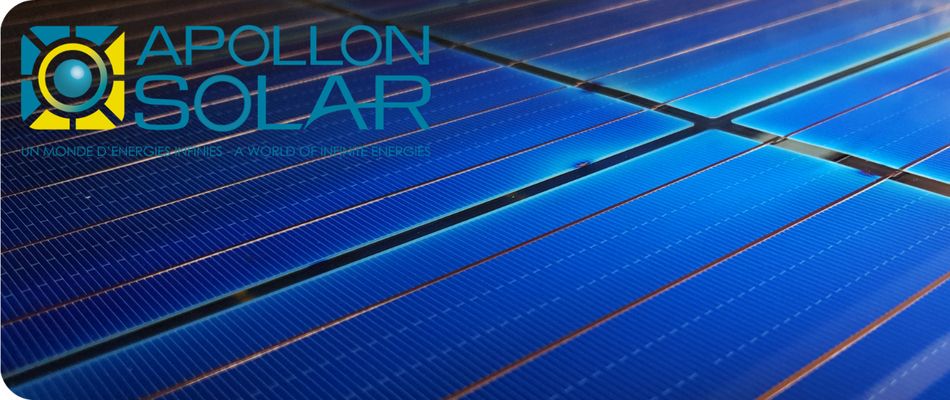What are bifacial PV Panels?
Conventional photovoltaic modules are made with a non-transparent backsheet at their rear side. In constrast, bifacial modules have a transparent rear side and use bifacial solar cells. The modules are thus capable of collecting light from both sides and harvesting the energy from ground reflections.

Bifacial modules come in different designs. Some are framed while others are frameless. A majority employ a rear glass and others use a transparent polymer as backsheets. Most use monocrystalline cells, but there are polycrystalline designs.
Advantages of bifacial PV modules
Bifacial solar modules provide many advantages, the main one being able to produce energy from both surfaces, thus increasing the total energy generation compared to mono-facial modules. Additional power generation coming from the transparent back side is largely influenced by ground albedo, the module tilt angle and shadows from the structures holding the panels. The higher power generation also allows a reduction of the Balance of System (BOS) costs because more power can be generated in a smaller array footprint [2]. Finally, most bifacial PV modules are made with a rear-glass backsheet ("glass-glass" or double glass" modules), which improves module durability as compared to the use of polymer backsheets.
History and market penetration
The concept of bifacial photovoltaics has existed since 1966 [3]. However, important manufacturing costs, lack of bifacial cells on the market, dedicated standards and appropriate additional energy generation estimations have limited the diffusion of this type of module. These key points have been significantly addressed during the past ten years and bifacial modules are now starting to penetrate the market.
According to ITRPV 2019 [4], the market share of bifacial module is about 2%, corresponding to approximately 2 GW/year [5]. Bifacial modules are also a fast growing segment (market share expected to multiply by five in the next two years) in a continuously growing PV market (+ 35%7year on average) [5].
Bifacial technology is fully compatible with other new innovative module concepts, like multi-wire connections, half-cells, and shingle technologies. Moreover, it is part of the innovative bankable technologies which will prevail over the coming years, along with multi-wire, half-cell and cell "shingle" technologies.
Bifacial PV modules in SUPER PV
In the SUPER PV project, silicon PV panel manufactures (Apollon Solar & Solitek) are deeply involved in the development and commercialization of high-quality bifacial PV modules.
Solitek began to specialize in the production top-quality glass-glass bifacial modules a few years ago and have already produced many MW worth of these modules. Solitek benefits from their strong experience in the assessment of electricity generation gain related to bifacial aspects.
Apollon Solar's proprietary and innovative N.I.C.E.TM technology is bifacial-in-essence and benefits from long durability and high recyclability. Module production in Apollon's facility in France will start in 2020.
Thanks to these partners, the three innovations developed in SUPER PV for silicon photovoltaic modules will be tested and optimized for bifacial modules, tomorrow's high-performance standard PV modules.
The three aforemented innovations are the following:
-
Functional coatings for front glasses with anti-reflective, anti-IR and anti-soiling capacities (Developed by TECNAN and LUREDERRA)
-
White reflector for rear glasses to redule optical losses (Developed by ISFH)
-
In-laminate low-cost bypass diodes to reduce shading losses (Developed by ISFH)
[1] https://www.civicsolar.com/article/trend-watch-bifacial-modules
[2] https://www.solarpowerworldonline.com/2018/04/what-are-bifacial-solar-modules/
[3] Mori, H. 1966, “Radiation energy transducing device”, U.S. Patent 3278811A
[4] ITRPV 2019, International Technology Roadmap for Photovoltaic
[5] IEA PVPS, Trends in photovoltaic applications, 24th Edition

